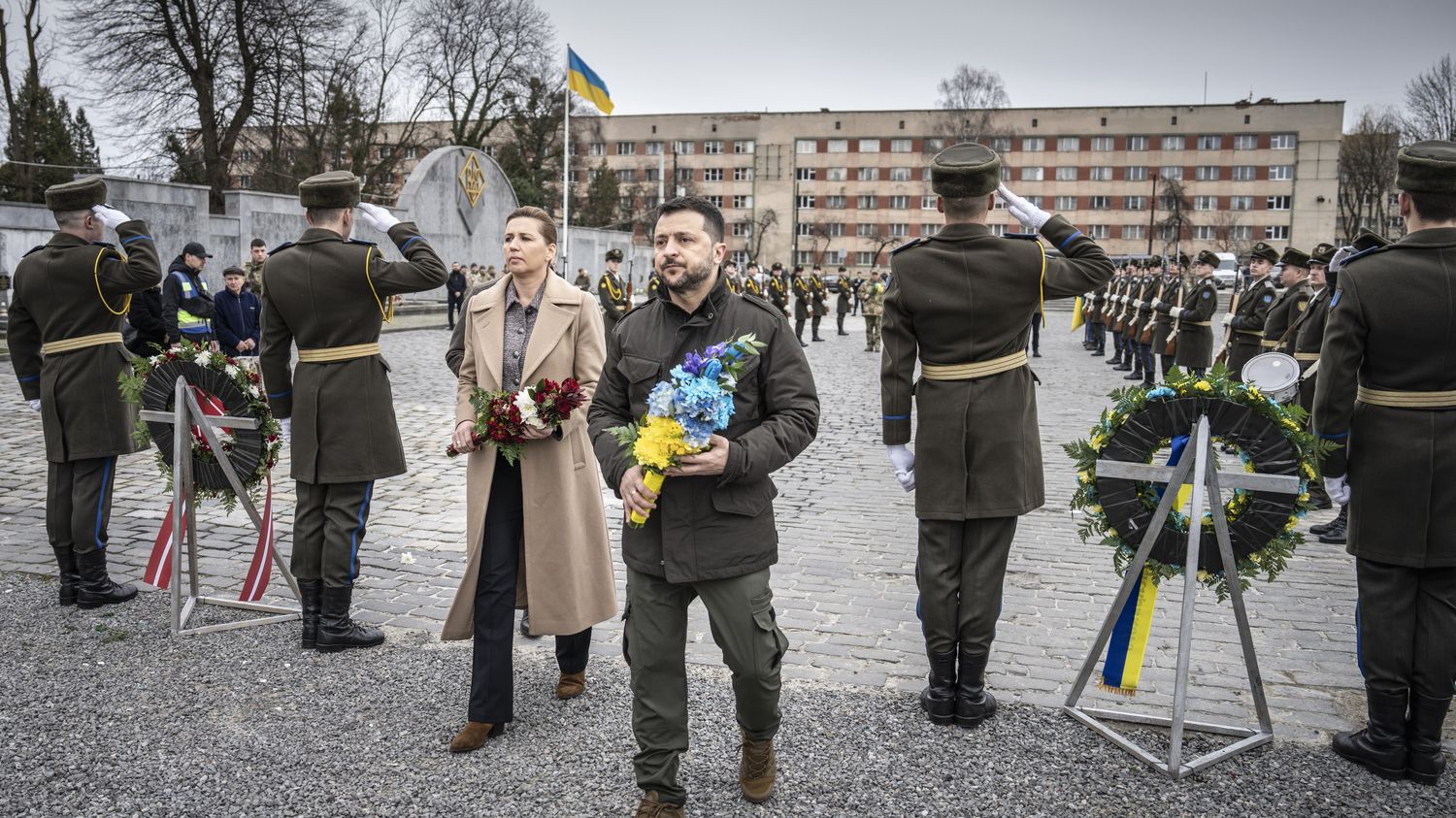After two years of war in Ukraine, the question of continuing international aid arises for all countries. Sweden has just announced aid worth a record 633 million euros, as Japan prepares to rebuild the country. Explanations, on site, from our correspondents.

Published
Reading time: 6 min

As Ukraine enters its third year of war against Russia, this February 24, 2024, international mobilization for the country continues, like Sweden, which like other Scandinavian countries, is one of the most important support from kyiv. On February 20, Stockholm announced a fifteenth military aid package to Ukraine, worth a record amount for the country, 7.1 billion crowns, or 633 million euros. Denmark is participating financially and materially in the war effort, while Japan is already thinking about the post-war period, reconstruction and the means that will then have to be deployed.
Equipment, tanks and ships sent by Sweden
In addition to the 30 state-of-the-art military tanks, Stridsfordon 90, which are being sent jointly with Denmark, the aid list includes several surface-to-air missile systems, and Sweden is offering military ships for the first time. 10 combat boats, 20 for transporting troops and equipment, designed to navigate in shallow waters, one meter deep, which should therefore be useful in Ukraine, particularly on rivers. The other novelty is an anti-tank missile system, which will be sent, as well as hand grenades, underwater mines and torpedoes, to strengthen kyiv’s naval capabilities. Everything should arrive in Ukraine within a few weeks.
Financially, Sweden has also invested more than 175 million euros to produce artillery shells, ammunition which Ukraine is sorely lacking. Stockholm has made support for Kiev the priority of its foreign policy, considering that if Russia wins, it could ultimately test the solidity of NATO in its neighborhood, by attacking the Baltic countries or Finland, which would attract inevitably Sweden, in a regional conflict.
Denmark also invests in the war effort
Copenhagen devotes 2.4% of its GDP to it and this is four times more than Sweden, for example, which devotes 0.5% of its GDP to military aid, and 0.5% to humanitarian aid. It is also much more than France, whose bilateral aid amounts to 0.07% of its internal wealth. As it happens, Denmark is the second country in the world to have spent the most on Ukraine relative to its GDP. The first being Estonia, which has committed the equivalent of 3.6% of its economy to Ukrainian defense, followed by Lithuania, Norway and Latvia.
Denmark, together with the Netherlands, has promised to send F16 fighter jets and six planes are expected to take off this summer, as soon as the Ukrainian pilots have finished their training. The other 10 F16s will arrive by 2025. The country has also taken the initiative to send its entire ammunition stock to kyiv and it is the first to do so. Danish Prime Minister Mette Frederiksen says Europeans cannot afford to wait for production to increase, as the European Union has admitted it will only be able to deliver half of the artillery shells it promised to Ukraine by March.
The latest predictions from Danish intelligence are rather gloomy. The country considers that Russia will hold out over the long term, and will have the resources, in just 5 years, to open a second front.
Japan is concerned about Ukrainian reconstruction
On February 19, 2024, Japan organized a conference to begin developing plans and partnerships to rebuild devastated Ukraine and reactivate its economy. The country first wants to show that it is a stakeholder and that it is committed to Ukraine’s side, but as its constitution prohibits it from providing weapons, it has until now limited itself to equipment paramilitary items such as helmets or bulletproof vests, humanitarian and financial support.
He now wants to get a head start in the rest of the process by also mobilizing the private sector, as Prime Minister Fumio Kishida explained. “Japan wants to come together to use the know-how of its companies in post-conflict or post-disaster reconstruction in the service of Ukraine, did he declare. Of course, this does not only concern large manufacturers. The door will also be open to small and medium-sized companies with high-performance technologies.” In all, some 56 agreements have already been signed between the two countries with the aim of making these promises a reality when the time comes.
Criticisms on the reasons for the conference
No one knows when and how this war will end. The holding of this conference, said to promote the reconstruction and economic growth of Ukraine, has also aroused negative reactions, including within the right-wing party in power, the PLD, the Liberal Democratic Party led by Prime Minister Fumio Kishida.
The unease comes first of all from the fact that the conference was held under the aegis of Keidanren, the largest economic employers’ federation in Japan, and some see it above all as a desire by companies to place their pawns in Ukraine to obtain profits. markets.
Then, Japan highlights its know-how in terms of post-disaster reconstruction, but at the same time, relief and reconstruction are currently struggling in the Noto Peninsula in west-central Japan where a disaster occurred. series of earthquakes and a destructive tsunami on January 1, 2024. In addition, some believe that Japan, whose population is aging and decreasing, does not necessarily have the resources to get involved to this extent abroad.
